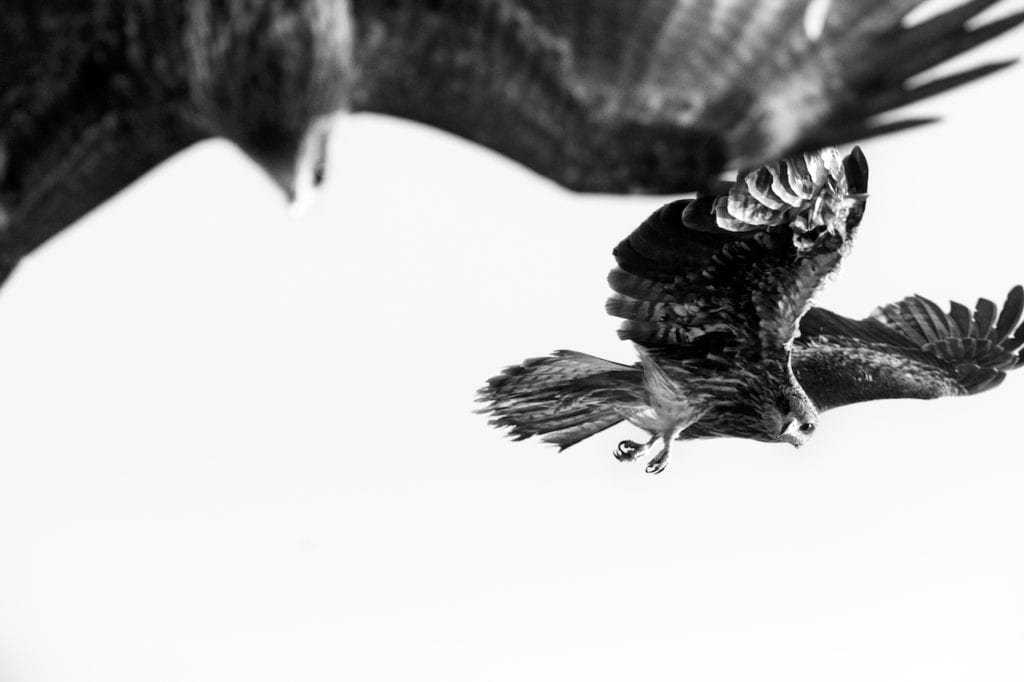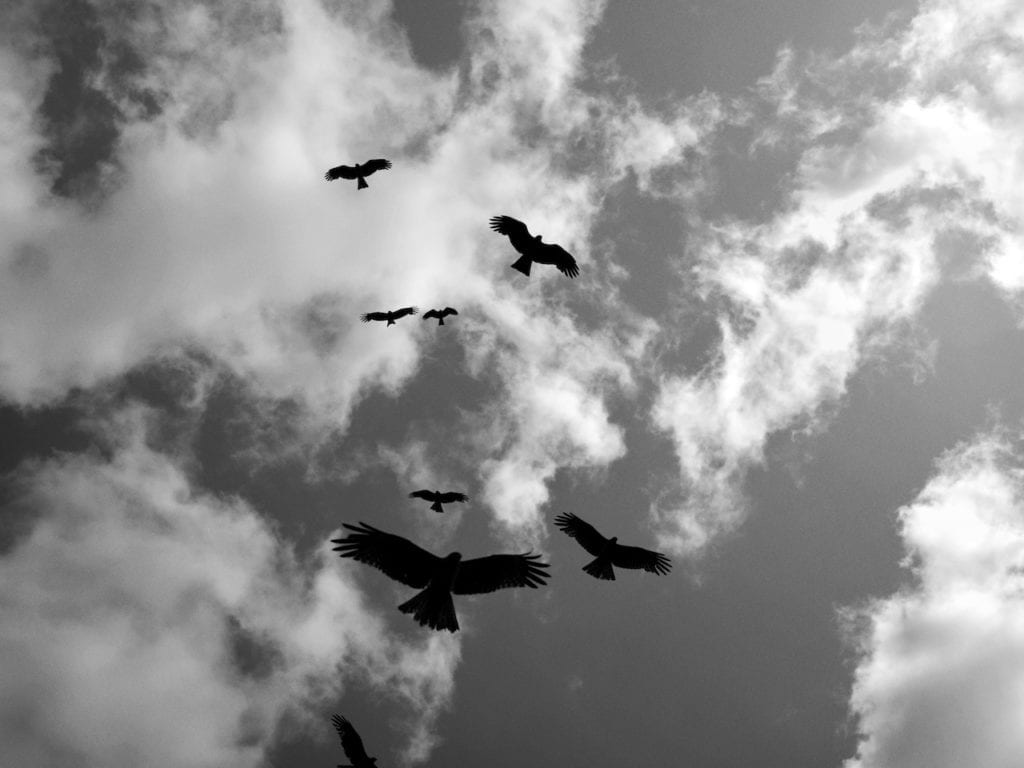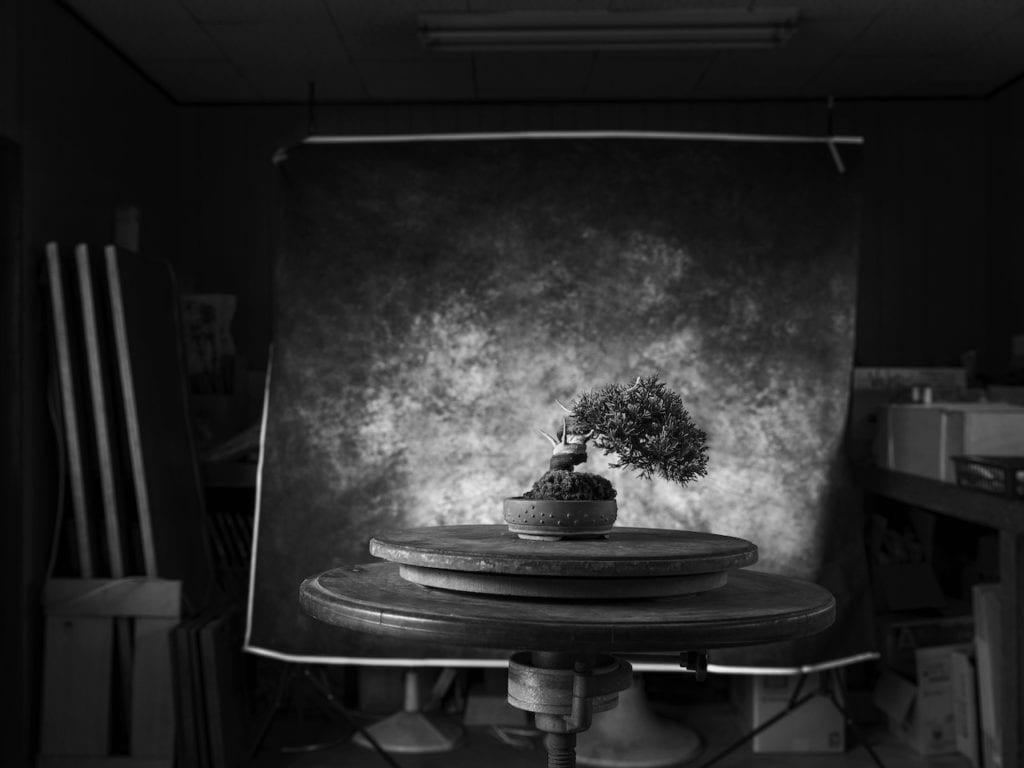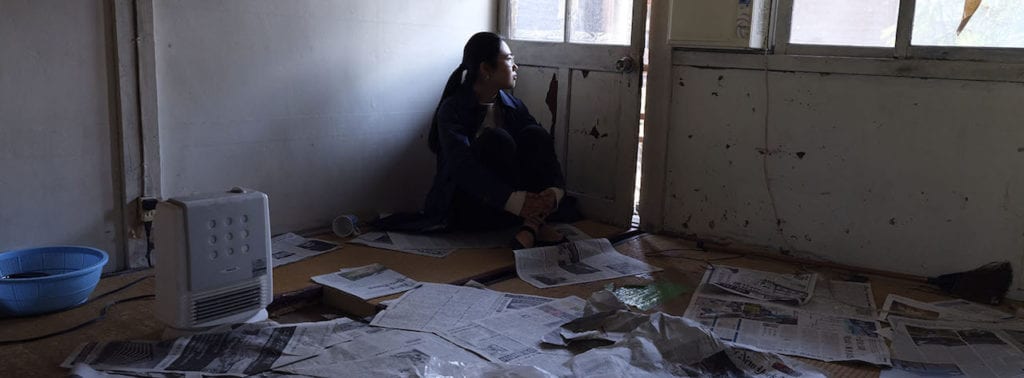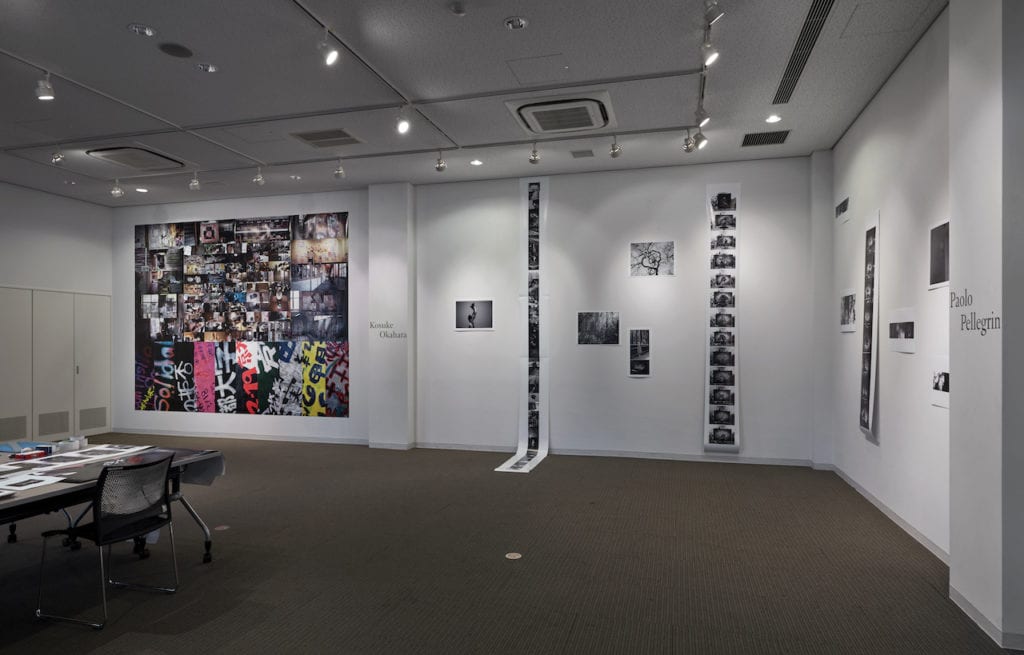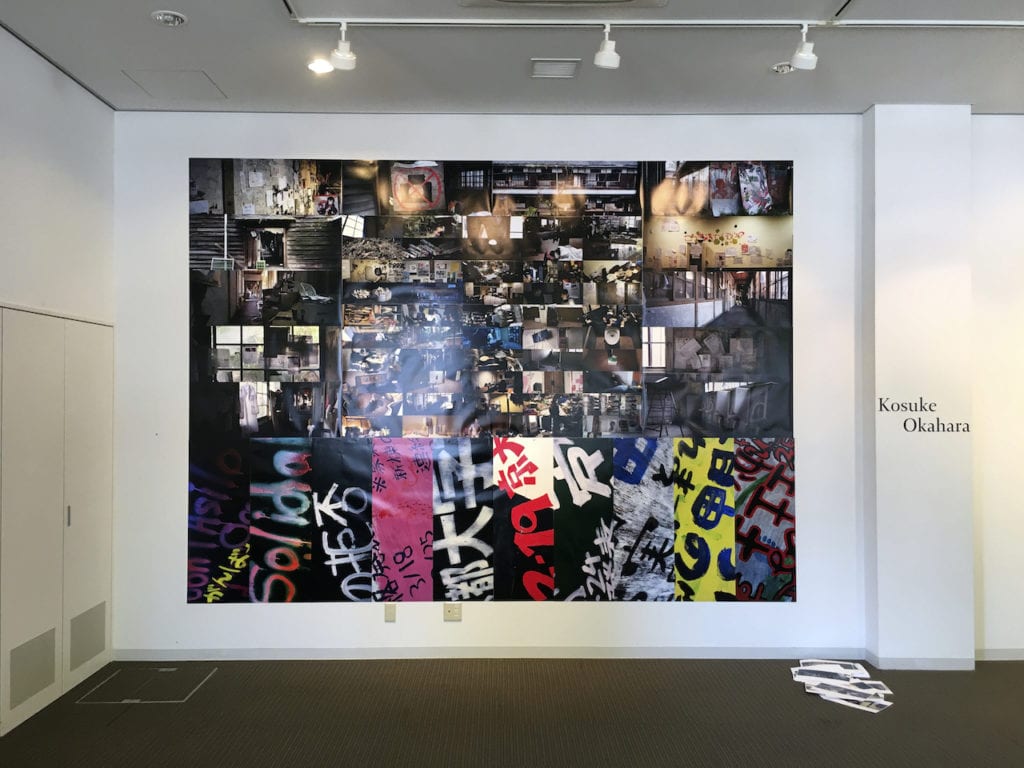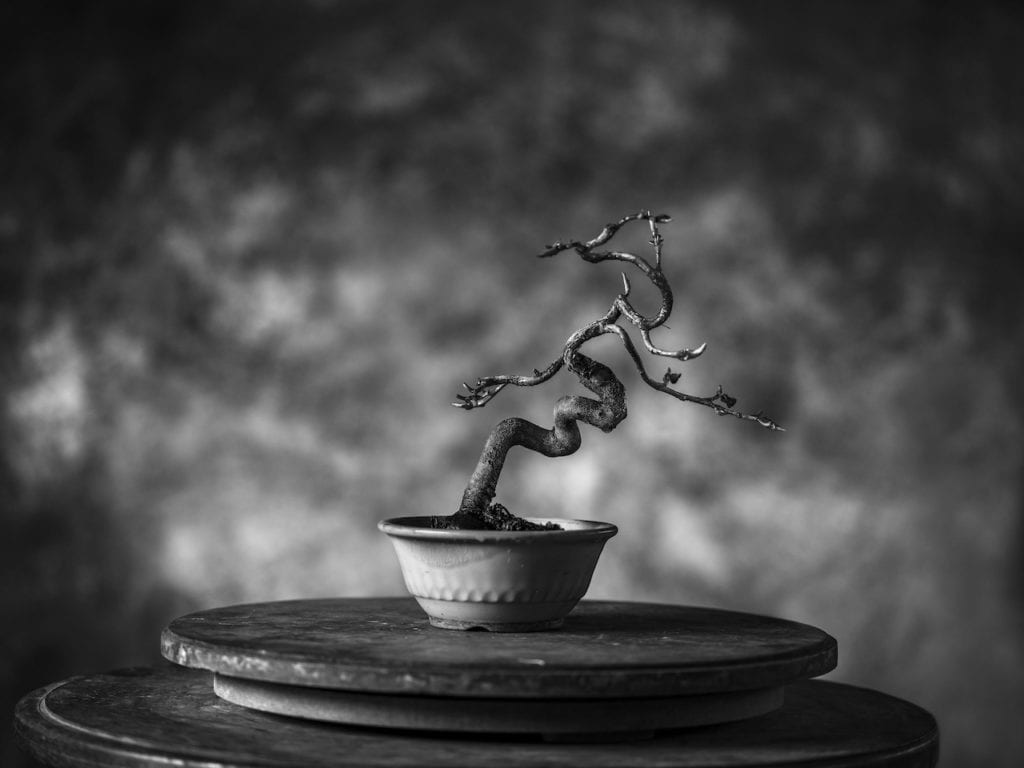‘The idea is to invite photographers to try to visually understand a place,” explains Andréa Holzherr, director of global exhibitions at Magnum. “Or not,” quips Paolo Pellegrin, who along with fellow photojournalist and good friend Kosuke Okahara, is taking part in Magnum Live Lab, a 10 day pop-up residency in Kyoto, Japan.
Pellegrin is a Magnum photographer originally from Italy. He approaches the residency from the perspective of an outsider, inviting Okahara, who is based in Japan, to provide a contrasting approach.
It is day four when BJP-online visits the studio, which is open to the public as part of the Kyotographie International Photography Festival. Pellegrin, Okahara and Holzherr – the curator of the final exhibition – are rushing around with rulers and paper cutters in hand, taping contact sheets up on the gallery’s white walls, and printing out images that the two photographers made that day. This process will be repeated for six more days, when they will take everything down and replace it with a curated selection of their work.
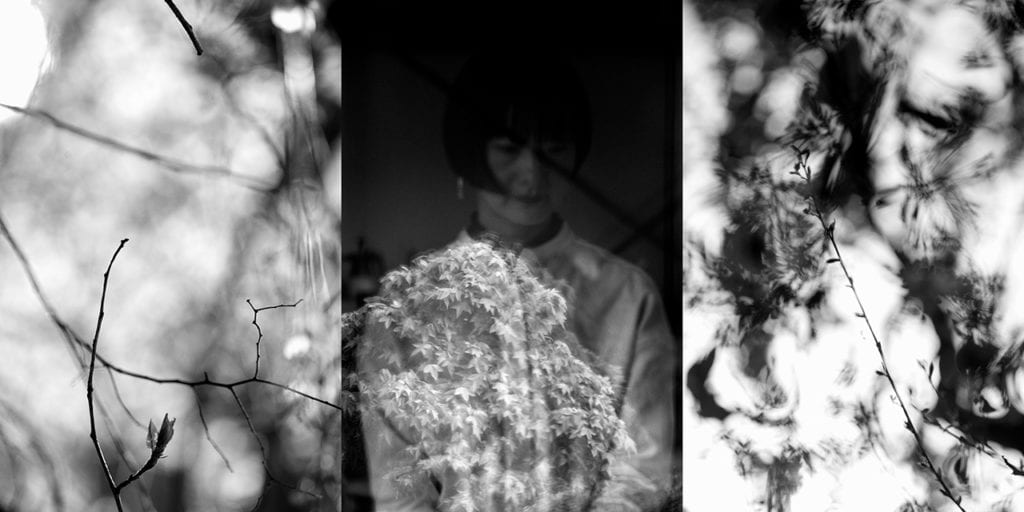
“Visitors will get an inside view, a behind-the-scenes, from the beginning of the process to the final exhibition,” says Holzherr, who usually finds herself “at the end of the food chain,” rather than in the midst of the photographic process. Instead of receiving a bulk of edited images, during the Live Lab she is able to work with raw material that is still in progress.
“For the time being, the theme is ‘The City’,” says Holzherr, who is overseeing the work throughout the duration of the residency. “But that could all change,” she adds – and change it did.
Pellegrin began by making black and white street photographs, drifting through the city; a flâneur guided by his discoveries. But by day four, he was photographing hawks that fly above the city: “The most interesting thing I’ve come across so far,” he says. When BJP-online speaks to Holzherr several days later, once the residency is completed and the exhibition mounted, she explains how Pellegrin moved on to photographing bonsai trees, combining his images into tryptics and printing them on long sheets of paper that draped from ceiling to floor.
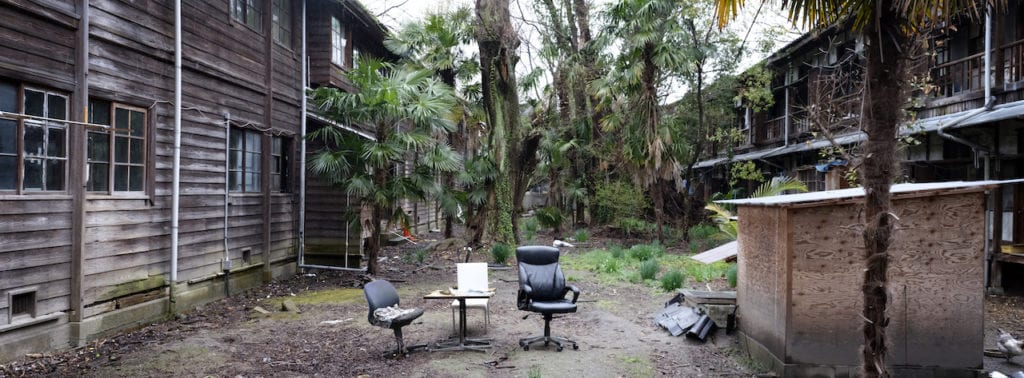
In contrast to Pellegrin’s intuitive approach, Okahara worked in a more traditional documentary style. His subject was the Yoshida dormitory, an illegally occupied student residence belonging to Kyoto University. The university has been trying to evict its residents since the 1970s, but the students refuse to leave the century-old institution in fear that its live-and-let-live attitude, politics, and progressiveness will be lost.
“Seeing this process is really useful for young photographers who don’t know how exhibitions are put together,” says Holzherr, recalling how some local students visited repeatedly over the 10 day period, with many returning to help install the final show.
The final exhibition will run throughout the duration of the festival, alongside solo shows by both photographers, on the second floor of the same gallery. Pellegrin is exhibiting his latest body of work, Antarctica, which runs a large projection, surrounded by an anthology of his striking work in photojournalism, including iconic images from his documentation of the Israeli-Palestinian conflict. Okahara is exhibiting Ibasyo, his long term project about women who self-harm, displayed in a dark, labrinth-like space.
Magnum Live Lab: Final Presentation, Antarctica by Paolo Pellegrin, and Ibasyo by Kosuke Okahara are all on shaw at Horikawa Oike Gallery in Kyoto, Japan, as part of the Kyotographie International Photography Festival, until 12 May
